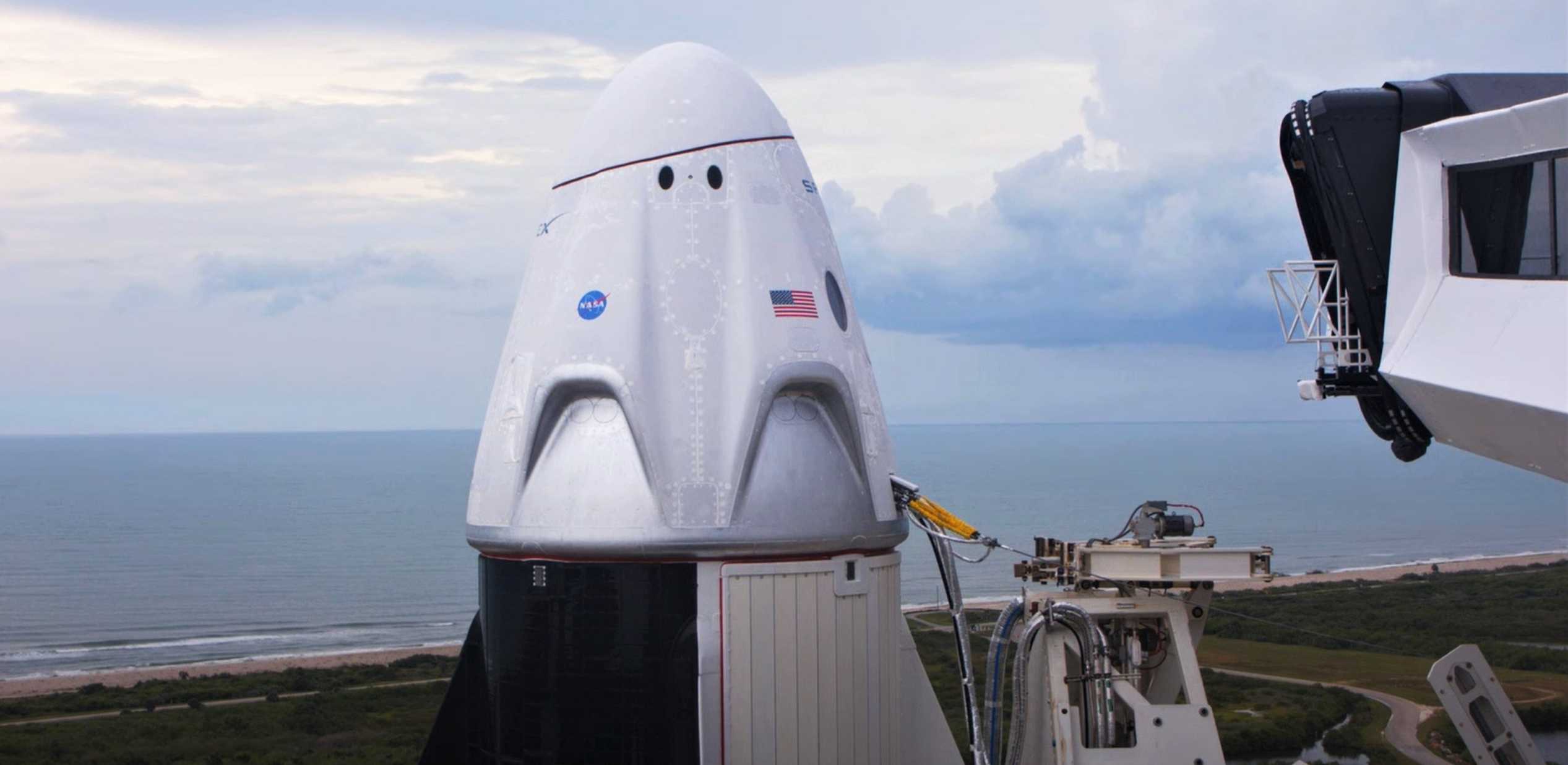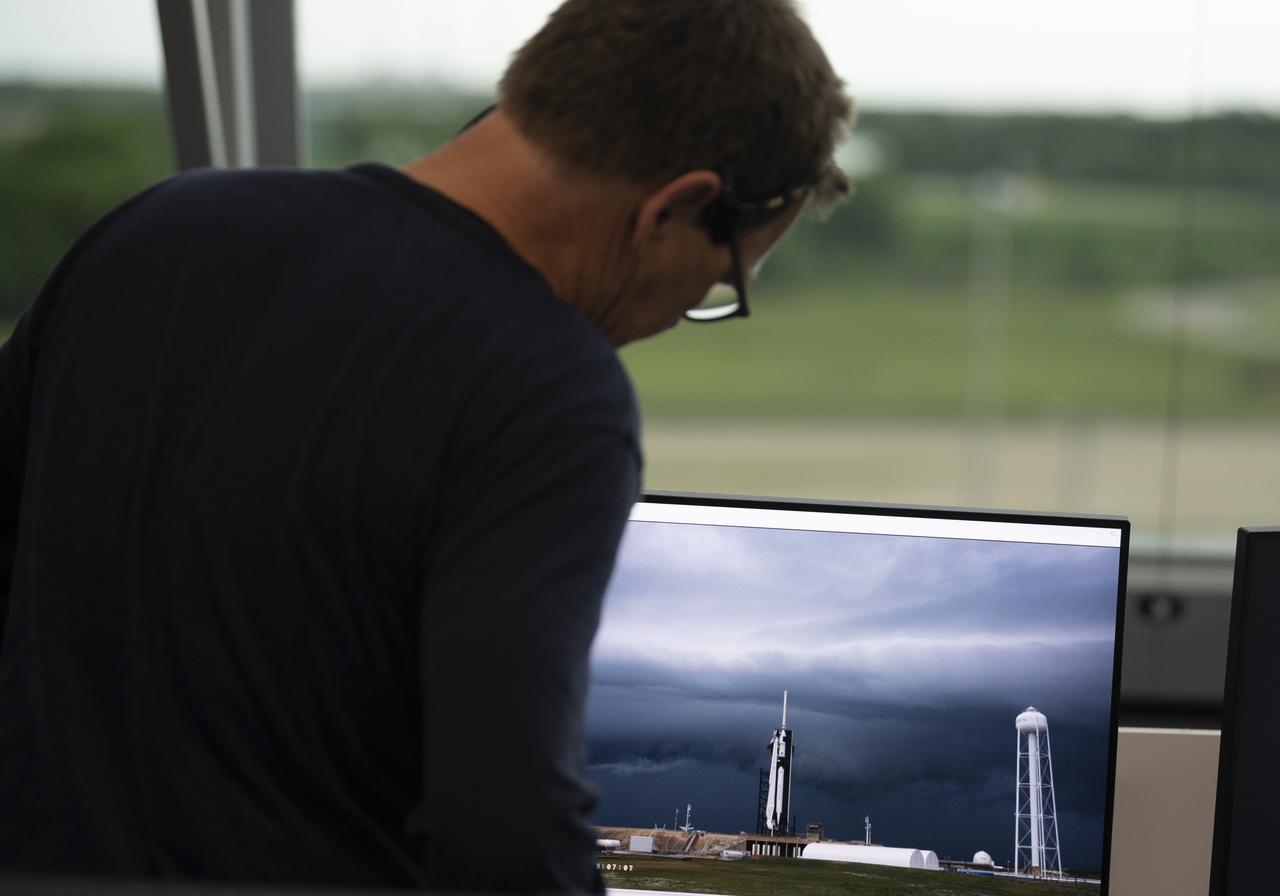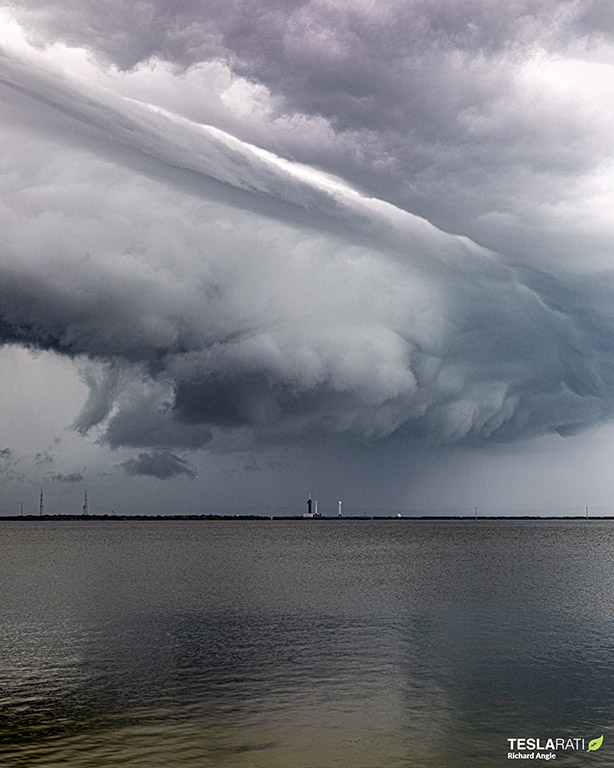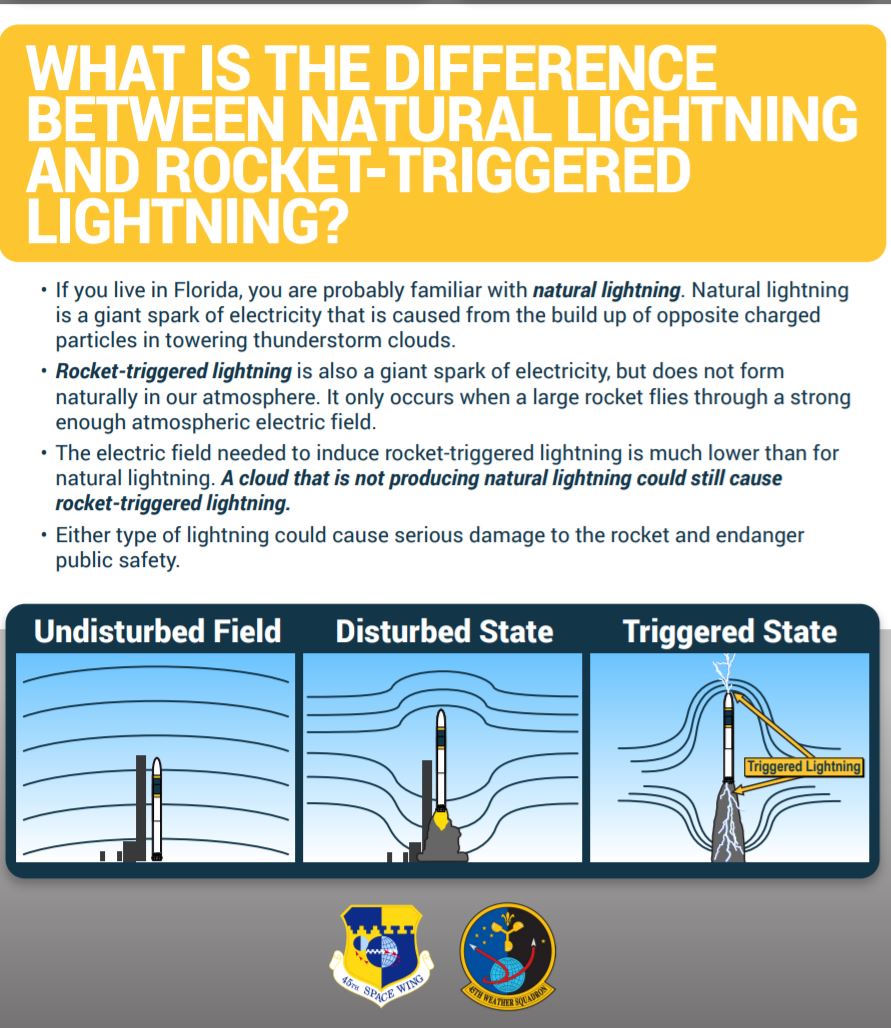
SpaceX’s historic NASA astronaut launch debut on track for second attempt
by Jamie GrohRather than making history on May 27th, SpaceX’s highest-profile launch ever – Crew Dragon’s NASA astronaut launch debut – was scrubbed just minutes before liftoff by stormy Florida weather. Unfortunately, conditions appear to be even less favorable on Saturday and Sunday backup windows.
Weather trended well, until it didn’t
The day began with launch fans growing increasingly concerned about a system of low-pressure off of Florida’s northeast coast that strengthened into tropical storm Bertha – the second named storm before the official start of the Atlantic basin hurricane season on June 1st. As the day progressed, Bertha became less of a worry for SpaceX recovery and emergency abort drop zones as it moved further north up the coast eventually making landfall in South Carolina. Then the thunderstorms began firing up.

Going into launch day launch weather officer, Mike McAleenan of the U.S. Space Force’s 45th Weather Squadron predicted a 60% chance of favorable launch weather conditions. That decreased slightly to 50% during the morning’s launch weather briefing. The 50/50 shot of Florida weather cooperating to get the launch off during the one-second long launch window opportunity remained the main concern for the rest of the day.

During the final thirty minutes of the countdown, many of the weather constraints that were holding up a green-light for launch from cleared up, but one last weather rule remained no-go. McAleenan stated over the internal weather communication loop during NASA’s live broadcast that if the launch window could’ve extended another 10 minutes, the weather would probably cooperate. This wasn’t the case, though. The launch attempt was ultimately aborted just 14 minutes shy of liftoff due to the “field mill” rule not clearing in time. The lightning field mill rule refers to a sophisticated electrical field system that spans the entire area of Kennedy Space Center and the surrounding area of Cape Canaveral responsible for continuously detecting the electrical charge of the atmosphere.
Protecting rockets from producing lightning
Rockets are not permitted to launch through an electrically charged atmosphere because of the possibility of what is called “triggered” lightning – lightning that is actually produced by a rocket bursting through an electrically charged atmosphere. Sending a rocket through an already unstable atmosphere can cause a disturbance, a lightning bolt, to be triggered. This phenomenon has the capability of being potentially dangerous for the rocket and, more importantly in this case, the occupants on board.

Demo-2, Round 2
Following a scrubbed first attempt, the 45th Weather Squadron released the L-3 (3 days until launch) forecast for the second attempt to send NASA astronauts Doug Hurley and Bob Behnken to the International Space Station. The prediction looked much like the one going into Wednesday’s attempt. On Thursday morning, May 28th, a new L-2 (2 days until launch) forecast was released showing very little change from the evening before.
SpaceX’s next attempt at a Demo-2 launch will occur on Saturday, May 30th, at 3:22:41pm EDT with another backup attempt scheduled for Sunday, May 31st at 3:00:07pm EDT. The outlook for the weather, however, looks much the same as it did for Wednesday. The 45th Weather Squadron is currently predicting only a 40% chance of favorable launching conditions on both days, and that’s just for the weather directly over LC-39A at the time of launch.

The 45th Weather Squadron does not predict other conditions that can determine a scrub of launch including upper-level atmospheric winds capable of completely sheering apart a rocket at altitude, or weather conditions for booster recovery and the recovery zones needed to rescue the Dragon capsule in the event of an emergency abort scenario. SpaceX has its own team of professionals that work in tandem with the 45th Weather Squadron to monitor the conditions of the recovery and abort zones. SpaceX takes things into consideration like wave height and patterns to determine whether or not conditions are appropriate enough for crews to perform any and all recovery operations that may be needed.
For Saturday’s attempt, the SpaceX Demo-2 will once again face the challenges of precipitation and dangerous lightning producing anvil and cumulus clouds. Expect launch day to look much like it did during the first attempt on Wednesday. SpaceX will need to thread one seriously precise needle to pull off the most historic rocket launch in company history.